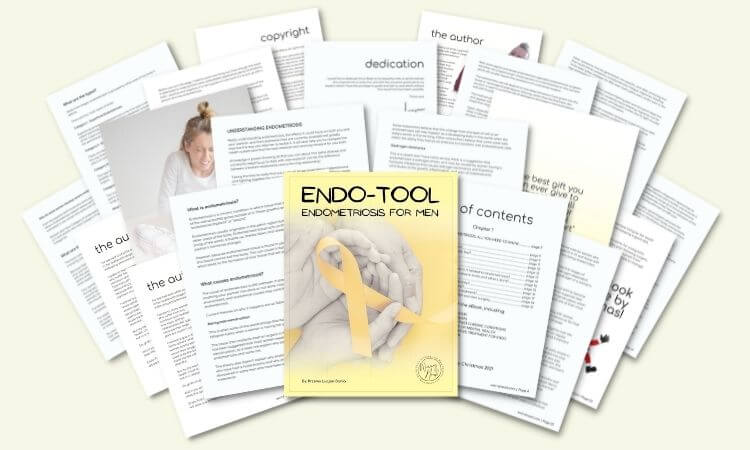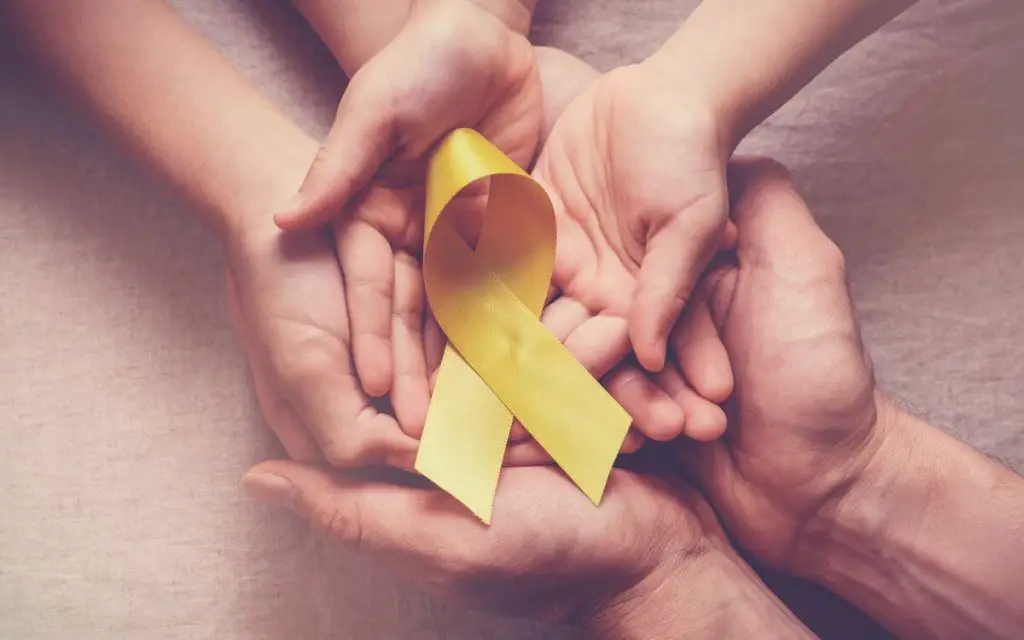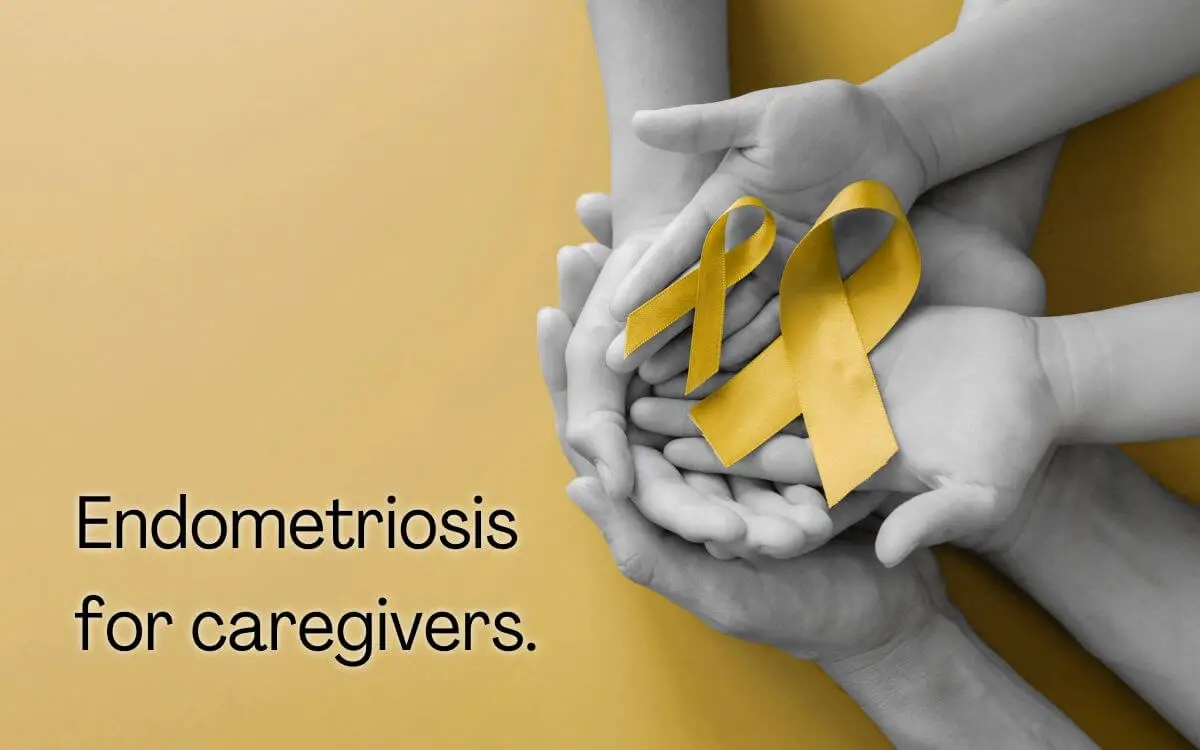Endometriosis for caregivers.
Endometriosis for caregivers is a subject I strongly care about, especially for male endometriosis caregivers who are invisible in today’s society. Men as endometriosis caregivers are often left feeling isolated, helpless, and confused. This is something that needs to be talked about more.
So what can I do about it?
Well, I can start by writing about it. endometriosis for caregivers is a topic that is often left out of the conversation, and I want to help change that.
If you’re a caregiver for someone with endometriosis, know that you’re not alone, I’m here.
As for July 2022, I believe I am the only man who runs a blog about male endometriosis caregivers. And if you noticed, I also write about fibromyalgia disorder, the second chronic condition my wife was diagnosed with after her stage IV deep infiltrating endometriosis.
I deeply care about both conditions, but fibromyalgia isn’t the subject here, so let’s stick to endometriosis…
Endometriosis for caregivers.
I care for my wife long enough to know that endometriosis and male partners are a topic that is often left out in the endometriosis community. Everyone usually focuses on women forgetting that every relationship consists of two people. Men as endometriosis caregivers are often forgotten, furthermore, marginalized.
Yes, marginalized.
Men feel isolated, helpless, and confused. We feel left out, alone, unsupported, and unimportant. Society expects men to be the strong ones, to have all the answers, and to never show weakness. And when we as men end up being caregivers for our endometriosis partners, we often feel like we’re failing because we can’t fix everything.
Men have a natural impulse to fix things, we are wired to do that, but when we cannot fix something, we feel like we have failed.
This is why I believe that it’s so important to talk about endometriosis for caregivers and specifically male endometriosis caregivers. Because we need to feel seen, heard, and supported.
If you’re a man reading this, know that instead of trying to fix your partner’s health, which you can’t, focus rather on changing your approach to her support. This is what I did a long time ago, and my marriage began to blossom.
So, how I did do it?
It began with education. I had to learn all the basics, the endometriosis jargon, the symptoms, the impact it has on the woman, and the impact it has on the man. Endometriosis affects both of you differently, and it’s important to understand that.
So, let’s start with the basics, and answer the following questions:
- What is endometriosis?
- What causes endometriosis?
- What are endometriosis symptoms?
- How is endometriosis diagnosed?
- What is endometriosis treatment?
- How to manage endometriosis?
If you want to learn more about endometriosis, I wrote an “Endo-Tool, Endometriosis for Men” e-Book of which you can get a FREE 1st chapter containing all you need to know about this chronic condition, plus how to cope and support your partner.
- What is endometriosis?
- What are the symptoms?
- What causes endometriosis?
- What does endometriosis look like?
- What are the stages?
- What are the types?
- What is adenomyosis and how is it related to endometriosis?
- Why do some women develop severe endo and others don’t?
- Does endometriosis cause infertility?
- How is endometriosis diagnosed?
- Do types and stages affect the treatment?
- Recurrence of endometriosis after excision surgery.
FREE Chapter of “Endo-Tool”!
an Endometriosis for Men book

What is endometriosis?
Endometriosis is a chronic condition that affects around 10% of women worldwide. It is a condition where the endometrium-like tissue, similar to the lining of the uterus, grows outside of it. Men as endometriosis caregivers need to educate themselves about this chronic illness.
Endometriosis most commonly affects the ovaries, fallopian tubes, and the tissue lining the pelvis. However, in rare cases, it can also affect other parts of the body such as the lungs, brain, and skin.
It all depends on the stage and type of endometriosis. As I mentioned, my wife was diagnosed with stage IV deep infiltrating endometriosis type.
What causes endometriosis?
The exact cause of endometriosis is unknown, but there are several theories.
- One theory is that endometriosis is caused by retrograde menstruation. This is when some of the endometrial cells flow back through the Fallopian tubes and into the pelvis during menstruation. These endometrial cells then implant themselves onto surrounding tissue and grow.
- Another theory is that endometriosis may be caused by an immune system dysfunction. It occurs when the immune system doesn’t recognize endometrial cells growing outside of the uterus and therefore doesn’t attack them.
- There is also a theory that endometriosis may be caused by changes in hormone levels. Endometriosis particularly affects the oestrogen levels, hormones that play a role in regulating the menstrual cycle. High levels of oestrogen can promote the growth of endometrial cells, at least in theory.
- The fourth theory is genetic. Endometriosis can run in families, so there may be a genetic predisposition to the condition. The NPSR1 gene, in particular, has been linked to endometriosis.
- And lastly, some environmental factors may play a role in the development of endometriosis. For example, dioxin is a toxic chemical that can disrupt hormone function and has been linked to endometriosis. Dioxin is found in herbicides, pesticides, and industrial waste.
So, these are some of the theories about what causes endometriosis, but the exact cause is still unknown.
What are endometriosis symptoms?
The main symptom of endometriosis is pelvic pain, which is often worse during menstruation. Other symptoms include:
- Pain during sex
- Painful bowel movements or urination
- Fatigue
- Infertility
- Gastrointestinal problems such as constipation or diarrhoea
- Heavy or irregular periods
But symptoms of endometriosis can vary from person to person, and most importantly, they depend on the severity of endometriosis, meaning, the type, the stage, and how deeply endometriosis infiltrates the body.
How is endometriosis diagnosed?
Male endometriosis caregivers should learn that this condition is often diagnosed based on the symptoms that a woman is experiencing.
A physical examination and pelvic ultrasound may also be carried out, as an MRI scan. However, in my wife’s case, none of the above tests revealed endometriomas. The only way to definitively diagnose endometriosis is through a laparoscopy, which is a surgical procedure where a small camera is inserted into the abdomen through a small incision.
Many women require repetitive surgery because endometriosis is an incurable illness that tends to come back. Its regrowth depends on several factors, such as the stage and severity of endometriosis, age, menopausal status, hormone levels, and other health conditions.
What is endometriosis treatment?
There is no cure for endometriosis, but there are treatments that can help to relieve the symptoms. These include:
- Pain medication: over-the-counter pain medication such as ibuprofen or paracetamol can help to relieve pain.
- Hormonal therapy: birth control pills, patches, or vaginal rings can help to regulate hormone levels and reduce the growth of endometrial cells.
- Surgery: in some cases, surgery may be recommended to remove endometrial tissue.
When it comes to pain medications, it’s important to note that endometriosis is a hormonal condition, and pain medication only treats the symptom of pain, not the underlying cause.
And while surgery can be an effective treatment, endometriosis often comes back after surgery, and many women require repeat surgery.

How to manage endometriosis?
There is no one-size-fits-all approach to managing endometriosis. Every woman is different, and what works for one woman may not work for another. However, there are some general tips that can help:
- Keep a pain diary: This can help you to identify triggers for your pain and track your symptoms over time.
- Exercise: Exercise can help to reduce pain and improve your overall wellbeing.
- Eat a healthy diet: A healthy diet can help to reduce inflammation and pain.
- Reduce stress: Stress can worsen endometriosis symptoms, so it’s important to find ways to reduce stress in your life.
If you are a caregiver for someone with endometriosis, it’s important to be supportive and understanding, so this is the second most important thing you can do to support your partner with endometriosis.
What can male endometriosis caregivers do?
Endometriosis for caregivers doesn’t have to be rocket science. Like with many chronic conditions, such as fibromyalgia, male partners need to simply learn to be understanding and to communicate openly about all the things that bother them.
Yes, you heard that correctly.
It is not only vital for your chronically ill partner to feel good. You need to feel good too. Compassion fatigue can lead you to resentment. resentment will only worsen the situation for both of you. Additionally, if you overwhelm yourself with tasks and ignore your own needs, you may reach the point of developing so-called caregiver burnout.
If you are a male endometriosis caregiver, it is especially important to take care of yourself, both physically and emotionally. This means eating a healthy diet, exercising regularly, getting enough sleep, and taking time for yourself to relax and de-stress. Basically, try to keep doing the things you love.
It is also important to have a good support system in place. This could include family and friends, as well as other endometriosis caregivers. There are also many online resources and support groups available.
Endometriosis can be a difficult condition to live with, but with the right support, it is possible to manage the symptoms and live a relatively normal life.
Tips for male endometriosis caregivers.
So, how can you avoid compassion fatigue or caregiver burnout, and better support your partner with endometriosis?
The simple way is to have a set plan in place. It doesn’t have to be complicated. Simply, follow some basic rules of the relationship with someone who lives with a chronic condition such as endometriosis.
Below, you will find 17 tips, especially for male endometriosis caregivers:
- Communicate openly and honestly with your partner about endometriosis.
- Educate yourself about endometriosis.
- Be understanding and supportive of your partner’s symptoms and pain.
- Help to manage practical tasks and household chores.
- Allow your partner the time and space to rest and heal.
- Attend medical appointments with your partner, if possible.
- Encourage your partner to exercise regularly and eat a healthy diet.
- Help to reduce stress in your partner’s life as much as possible.
- Encourage your partner to keep a pain diary or journal. endometriosis can be very unpredictable, and a pain diary can help to track patterns and triggers.
- Offer physical and emotional support to your partner.
- Respect your partner’s boundaries. endometriosis can be very isolating, so it is important to respect your partner’s need for space if they need it.
- Find a good balance between taking care of your partner and taking care of yourself. Don’t forget to nurture your own needs as well.
- Seek out a support system for yourself, whether that be family and friends, other endometriosis caregivers, or online resources.
- Take time for yourself regularly to relax and de-stress.
- Keep up with your hobbies and interests.
- Seek professional help if you are struggling to cope with endometriosis caregiver burnout.
- Remember that you are not alone. endometriosis can be a very isolating condition, but there are many others out there in similar situations.
FREE Chapter of “Endo-Tool”!
an Endometriosis for Men book

Is there an endo book for men?
Yes, there is, it’s called “Endo-Tool: Endometriosis for Men” and I wrote it with the help of my lovely wife. The book is great for male endometriosis caregivers because it’s written by me, from the perspective of a male partner who supports his chronically ill wife.
It is unique and valuable due to the fact that most books aim to educate women about endometriosis, and what was always missing was the perspective of men as endometriosis caregivers.
“Endo-Tool” is a one-stop shop for men who struggle to cope with their partner’s illness, who find it difficult to understand endometriosis, to be supportive and compassionate. This endometriosis book for men will help you to understand endometriosis from a male perspective, and offer tips and advice on how to be the best endometriosis caregiver you can be.
You can find “Endo-Tool: Endometriosis for Men” in my shop, or, if you wish to check the first chapter FREE, you can, if you decide to join my email list, through which you can get a 33% discount on the whole book, plus 33% discounts on all of the products endometriosis, fibromyalgia, and overall chronic illness related.
Meanwhile at the ranch…
To finish off, here’s a quick reminder of what we discussed…
Endometriosis is a chronic and painful condition that can have a major impact on a person’s life. As a male endometriosis caregiver, it is important to be understanding and supportive of your partner.
There are many things you can do to help ease the burden of endometriosis, such as helping with practical tasks, reducing stress, and attending medical appointments. Seek out a support system for yourself, and take time for your own needs as well. If you are struggling to cope, seek professional help. Remember, you are not alone.
Endometriosis can be a very isolating condition, but there are many others out there in similar situations.
If you want to learn more about endometriosis, check out my book, “Endo-Tool: Endometriosis for Men”. It’s a great resource for male endometriosis caregivers and offers tips and advice on how to be the best endometriosis caregiver you can be.
So, that’s it for now.
I hope this article has been helpful. If you have any questions, feel free to reach out. And remember, you are not alone! And do leave a comment in the section below, if you have any tips or suggestions.
Take care of each other!


About Me
Hi, I’m Lucjan! The reason why I decided to create this blog was my beautiful wife, who experienced a lot of pain in life, but also the lack of information about endometriosis and fibromyalgia for men…
